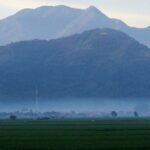The tarum tree also plays a role in the trend of using natural dyes in the textile industry, which continues to grow as awareness of the environmental impact of synthetic dyes increases.
The tarum tree is one of the sources of natural dyes that is now being reconsidered. This tree, with the Latin name Indigofera tinctoria, is known to produce a distinctive blue color from its leaf extract.
The tarum tree has been known for a long time in various regions of Indonesia, especially in the Sunda lands, which even named this plant as part of the name of a historic river. The plant produces the glucoside indican compound, which after undergoing fermentation and oxidation processes, turns into indigo blue dye.
The color produced by tarum has high resistance to washing and exposure to sunlight, making it superior compared to some other natural dyes that tend to fade quickly.
The dyeing process using tarum is done by soaking the






